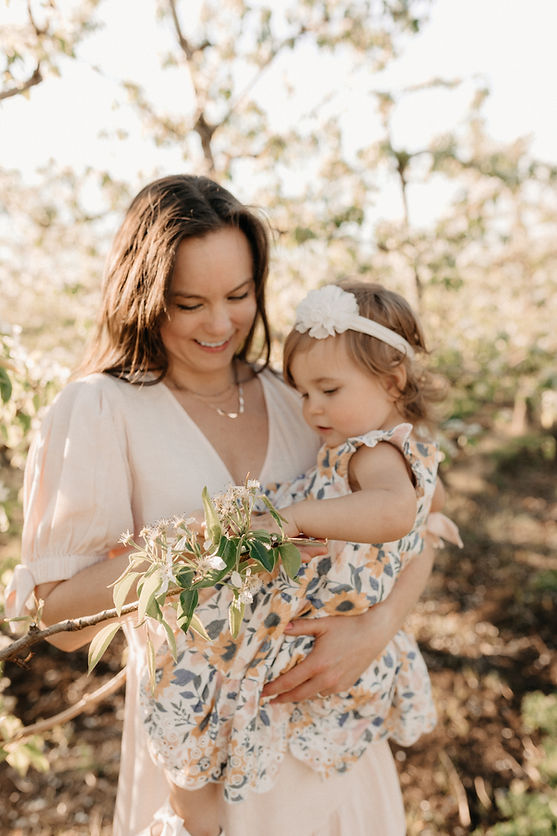How I’ve Been Practicing Crib Naps with My 8 Week Old (and What’s Actually Working)
- Brittney Koleszarik

- May 28
- 5 min read

Bringing home a newborn is a whirlwind—especially during those first couple of months. One thing I hear from moms all the time (and something I’ve experienced firsthand!) is: “How do I get my baby to nap in the crib instead of only on me?”
So I wanted to share a behind-the-scenes look at how I’ve been gently practicing crib naps with my own baby around 6 to 8 weeks old—what’s been working, what hasn’t, and how we’re making slow and steady progress.
As a pediatric sleep consultant, I know it’s not about perfection—it’s about giving our babies exposure and the opportunity to practice healthy sleep skills without pressure.
💡 Why Practice Crib Naps This Early?
At 6–8 weeks, babies are still very much in the “fourth trimester.” It’s totally developmentally normal for them to prefer contact naps—and there’s nothing wrong with that! But gentle crib nap practice can help:
Decrease the need to only contact nap over time
Encourage better sleep quality with less disruption from movement
Prepare your baby for more independent sleep down the road
Give you a much-needed break (even just 20–30 minutes can be gold!)
Think of it like tummy time for sleep—it’s a skill, and skills take repetition.
🕒 Why the First Nap of the Day Is the Easiest to Practice
When I started practicing crib naps, I focused on just one nap a day, and always started with the first nap. Here’s why it’s the best one to try:
Sleep pressure is highest—your baby is naturally more tired
Cortisol levels are low—which means babies are calmer and more adaptable
You’re less mentally fatigued—and more able to be patient and consistent
Your baby hasn’t built up overtiredness from earlier short naps or skipped naps
The environment is quieter—especially if you have older kids who are still asleep or playing independently in the morning
This makes the first nap the most likely to be successful—and that small win builds momentum for the rest of the day.
🛏️ How We’re Practicing Crib Naps (Step-by-Step)
1. We Try One Nap a Day in the Crib
At first, I aim for just one crib nap per day—usually the first or second nap—and the rest are contact naps or carrier naps or on the go naps. That way, we’re gently exposing our baby to the crib without expecting full independence just yet. Then I started doing 2 and then 3 naps in the crib.
2. We Follow Age-Appropriate Wake Windows
At this stage, my baby’s wake windows are about 60–75 minutes. I watch closely for sleepy cues (like zoning out or quieting down) and start our wind-down early to avoid overtiredness.
3. We Use a Mini Nap Routine
Our nap routine is short but consistent:
Diaper change
Sleep sack
Rock with white noise for 1–2 minutes
Place in crib drowsy (or awake, depending on the day)
This helps signal “sleep is coming” and makes the transition to the crib smoother.
It's totally OK to start putting your baby asleep in there the first few times as well and then after a few days for sure start putting them in drowsy or awake and do your best to comfort them to sleep on their own from outside of the crib. Be patient, it can be a longish process but this is why I start with that first nap of the day only.
4. The Room Is Very Dark
I keep the sleep environment very dark for naps—just like at night. This reduces stimulation and helps cue melatonin production, even during the day.
5. We Use White Noise
I use continuous white noise during every nap to drown out household noise and mimic the soothing sounds of the womb. I recommend a portable sound machine or an app if you’re on the go.
6. We Don't Use a Pacifier (But I Recommend One If Your Baby Takes It)
My baby didn’t take to a pacifier, but if your baby does—use it! Pacifiers can be a powerful tool for soothing and extending naps, especially in the crib.
⏰ Our Sleep Goals & What Happens When She Wakes Early
My goal for crib naps is 30–50 minutes, but ideally we get a 1–2 hour stretch. When naps fall short of that (especially under an hour), here’s what I do:
💤 I Try to Resettle in the Crib First
I give her a minute or two to see if she’ll resettle on her own, and if not, I gently intervene using one of these techniques:
Option 1:
I hold her head gently with one hand (in a close comforting way I rest my hand on top of her head)
Place my other hand on her chest
Then I rock her softly side to side, giving the sensation of movement while keeping her in the crib
Option 2:
I place both hands on either side of her body
Bring my face in close so she can feel my presence and my light breathing
Then I shush loudly in her ear to recreate the comfort of a contact nap
I try these soothing strategies for a few minutes to see if she can drift back to sleep.
👐 If That Doesn’t Work…
If she’s still fussy or wide awake, I’ll pick her up to calm her, hold her for a moment or two, then try laying her back down once more. I might do this a few times.
If it’s just not happening, I take her out of the crib, reset, and try again later. No pressure.
🤱 I Still Rescue 1–2 Naps a Day with Contact Naps
I make sure my baby gets enough daytime sleep overall, even if that means holding her for a couple naps. At this age, protecting total sleep is more important than strict crib practice. These contact naps help prevent overtiredness and keep our nights more settled too.
✅ What’s Working So Far
The first nap of the day is consistently the easiest to get in the crib
The mini routine helps my baby know what to expect
The dark room + white noise combo is a game changer
She’s slowly becoming more familiar and content in her crib
I feel more confident and less stressed knowing I have a plan
🚫 What I’ve Let Go Of (For Now)
Expecting every nap to be a crib nap
Stressing about short naps—I treat them as learning moments
Trying to fix every nap—I focus on giving my baby rest, in whatever form that looks like
Final Thoughts
Practicing crib naps at 6–8 weeks isn’t about sleep training—it’s about creating familiarity, trust, and a rhythm that supports better sleep down the road. One nap a day is enough. Some days won’t go to plan, and that’s OK.
Gentle, loving exposure is the goal. You’re not behind. You’re building the foundation.
If you’re feeling stuck or need a realistic newborn nap routine that works for your baby’s temperament and your lifestyle, I’d love to support you.
You’ve got this, mama. One nap at a time. 💜









Comments